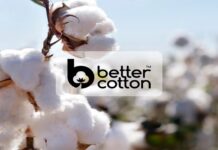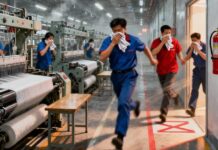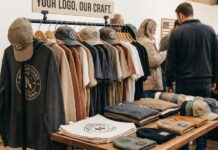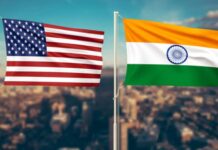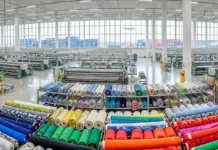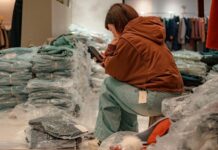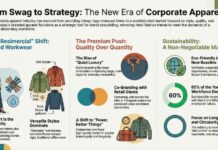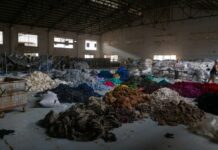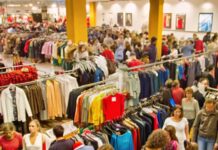In the wake of the July 2025 US-EU trade deal, the global textile industry stands at a crossroads. The imposition of a 15% tariff on most EU textile exports to the United States—a compromise reached to stave off a steeper trade war—has dramatically redrawn the map for some of the world’s largest textile players. Giants on both sides of the Atlantic are now swiftly rethinking strategy, supply chains, investments, and market focus to survive and thrive in this new era. The post-deal period is not just a time of turbulence—it’s a crucible for innovation, resilience, and reinvention across the industry.
Rethinking Market Access and Export Models
European Giants: Retrench, Refocus, and Reroute
For EU textile leaders, the US market has long been a coveted prize, especially for luxury brands and high-end manufacturers from Italy, France, Spain, and Portugal. With tariffs erasing much of their price competitiveness overnight, companies like LVMH (Louis Vuitton Moët Hennessy), Inditex (Zara), and Loro Piana are engaging a multipronged response:
-
Intensifying Home and Regional Presence: Many established names are doubling down on domestic and broader EU markets, where they maintain brand cachet and customer loyalty unchallenged by new tariffs.
-
Pivoting to Alternative Export Destinations: There’s a marked acceleration in efforts to build or expand client bases in Asia, the Middle East, and emerging markets, regions now critical for offsetting US revenue declines.
-
Investing in Digital Channels: E-commerce and digital engagement strategies are moving front-and-center, with more focus on direct-to-consumer sales and omni-channel retail experiences that can help shore up margins and build lasting customer relationships.
US Manufacturers: Boosting Domestic Play, Seizing Home Advantage
For US-based giants such as Hanesbrands, Milliken & Company, VF Corporation (owner of brands like The North Face and Timberland), and Mohawk Industries, the tariff lines have provided a sudden, and possibly temporary, buffer against European competition:
-
Aggressive Domestic Expansion: With EU imports facing steeper costs, American players are scaling up domestic output and speeding new product launches aimed at the mid- to high-value segments previously dominated by European brands.
-
Brand Nationalism in Marketing: A new wave of marketing campaigns is tapping into “Made in USA” sentiments, repositioning classic homegrown brands for patriotic appeal and messaging around supply chain security.
-
Co-opting EU Innovation: US companies are increasingly active in pursuing licensing, technology partnerships, or joint ventures with EU firms, hoping to bring European style, craftsmanship, or sustainability know-how to the American market under more favorable trade terms.
Remaking the Supply Chain: Flexibility and Diversification Rule
Embracing Sourcing Diversification
One of the most profound changes has been the scramble to diversify sourcing and manufacturing. Both US and EU giants are re-evaluating long-established supplier relationships and location strategies:
-
Redesigning Global Networks: European groups are looking beyond the EU-US corridor, diversifying suppliers in Asia (Vietnam, India, Bangladesh) and North Africa. Some are pursuing “China plus one” or “Turkey plus one” sourcing models to hedge risks.
-
Reshoring and Nearshoring: In the US, industry leaders are exploring nearshoring options in Central America or Mexico and even reopening or expanding stateside textile facilities where it makes strategic sense.
Investing in Traceability and Agility
Heightened tariff risks and volatile global demand are pushing investment into technologies that promote supply chain transparency and agility:
-
Digitization and Data: Leading textile firms are investing in supply chain management platforms, blockchain traceability, and AI-driven demand forecasting to enhance responsiveness and mitigate cost shocks.
-
Flexible Manufacturing: Facilities are increasingly designed for modular and on-demand production, which allows companies to rapidly scale or switch products and stay ahead of market shifts.
Sustainability: Not a Casualty, But a Catalyst
Higher costs and tougher competition might tempt companies to cut corners on sustainability—but leading textile giants see the opposite. With prices rising, brands are using sustainability and ESG credentials as value differentiators:
-
Eco-Friendly Innovation: LVMH and Inditex, among others, are accelerating investments in sustainable materials, closed-loop manufacturing, and green supply chains, framing these efforts as both ethical imperatives and essential for premium brand positioning.
-
Marketing Authenticity: Consumer communications are focusing on traceability, circular economy initiatives, and certifications, designed to retain conscious buyers even with higher post-tariff price points.
Strategic Partnerships and M&A: Scale, Synergy, and Survival
-
Joint Ventures Across Borders: EU and US firms are forming joint ventures, especially around R&D and product development, to share costs and create tariff-resistant lines or localize production in key overseas markets.
-
Targeted Mergers and Acquisitions: Some cash-rich players are eyeing acquisition opportunities, either to gain a manufacturing footprint in the other region (and thus avoid tariffs) or to consolidate brand portfolios and expand e-commerce capabilities.
Navigating Policy and Advocacy
Both sides are also actively engaging policymakers:
-
Lobbying for Relief: US companies resist further tariff escalation and advocate for modest, targeted support—grants for domestic reshoring, tax incentives, and innovation funding. In the EU, intensive lobbying is underway for new exporter support packages and flexibility on trade rules with friendly non-US markets.
-
Participating in Standards Formation: Both US and EU leaders are pushing for coordinated regulations on labeling, safety, and ESG compliance to reduce friction in transatlantic trade—even under the new tariff regime.
Looking Ahead: A New Transatlantic Textile Order
If there’s one watchword threading through boardrooms from North Carolina to Milan, it is adaptation. The biggest players are leveraging scale, capital, reputation, and agility to reframe the post-deal world as one of opportunity as much as risk. For the nimblest, the deal is not just a challenge, but a spur to reinvent how textiles are made, marketed, and delivered.
As supply chains globalize in fresh ways, and as sustainability and digitization move from aspiration to necessity, the giants of the textile industry send a clear message: survival and success hinge on those bold enough to rewrite their playbooks in real time. The race is on—not just to preserve market share, but to shape the next era of leadership in textiles. For both US and EU industry titans, the winners will be those who innovate, collaborate, and pivot fastest as the fabric of global trade continues to shift.






